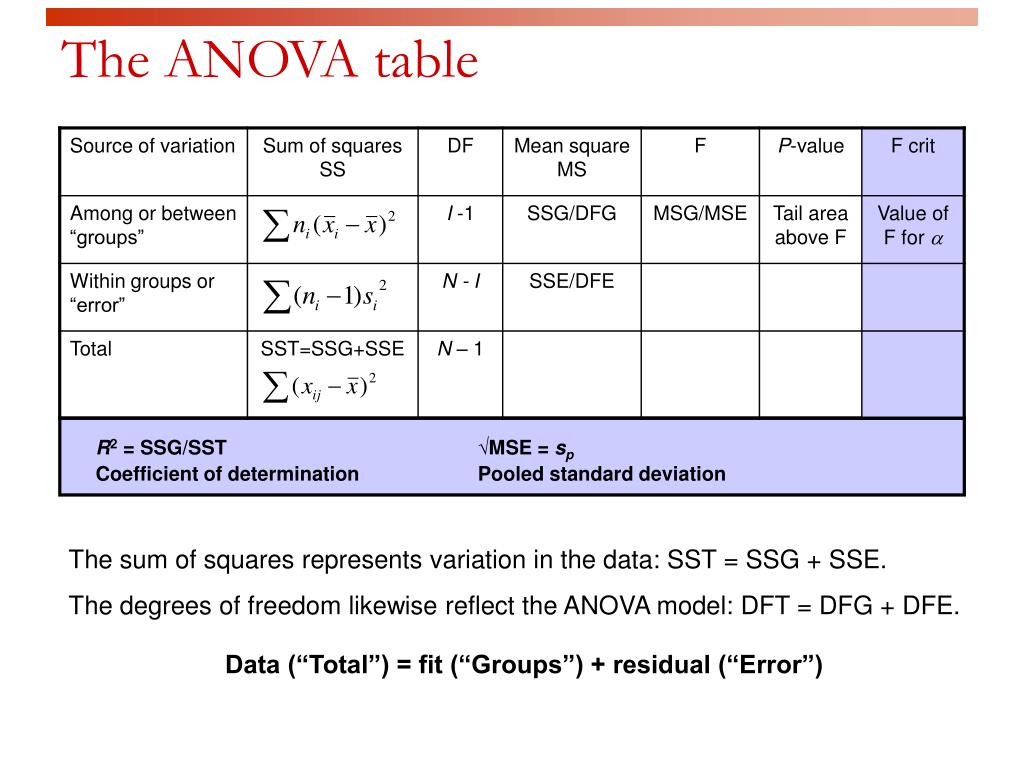
- #Make anova table rmarkdown how to#
- #Make anova table rmarkdown update#
- #Make anova table rmarkdown code#
This can have as many sub-directories as you like, such as Ethics, Grant Applications, etc., but it’s often good practice to have a folder for your Data, Analysis, and Output. Within this folder, you can have several sub-directories for the different things to do with your experiment. One way to structue your work is by having everything for one experiment in one folder, called something like “Experiment 1”. Now, we can store all of our analysis and write up in one folder.
#Make anova table rmarkdown how to#
I’ve shown you how to do this below.ġ0.2.2 Folder Structure for Reproducible Analyses
#Make anova table rmarkdown code#
Here, you include text and code chunks like in your R Notebooks, but you use the Knit button create an output which translates your code into an HTML, PDF, or Word document. However, we can also produce a similar R Markdown report which requires you to compile your code before it produces output. This updates every time you save your document, without rerunning your code.

We’ve already used one method for producing reproducible reports in R the R Notebook. That complex analysis you did can then be reproduced by others, helping to push science forward! Why is this a good thing? Aside from catching mistakes in your code, you’re leaving a record for other researchers to follow in their own work. Furthermore, by using reproducible reports, others can read your work and see how you calculated your statistics, which increases the transparency of your work.
#Make anova table rmarkdown update#
The advantage of this over simple scripts to conduct your analyses and a separate document used to write up these analyses is that every time you change something in regards to your experiment, you can automatically update everything in your report, reducing the chance of human error. To remedy this, we can use R to produce reproducible reports. Imagine the pain involved in changing all of your table outputs and plots by hand every time you make a minor change? On top of this, you’re very likely to introduce some mistakes when transcribing your results. However, even with R, you don’t want to recreate your results and translate your outputs every time you change to a new format. One advantage of using R for your analyses is that every time you make a small change to your analysis, for example testing more participants, you have all of the code there to reproduce your analyses using the exact same method as before. When doing your research, you’ll often have to write up a number of reports for your studies, be this papers, presentations, or blog posts. If you get the chance, please enrol on this course. This session is heavily informed and inspired by the excellent Improving Your Statistical Inferences course by Daniel Lakens.

10.8 Understanding Problematic Design Choices.10.7 Evaluating Evidence for the Null Hypothesis.10.2.2 Folder Structure for Reproducible Analyses.9.7 A Note on Power, Effect Sizes, and Pairwise Comparisons.9.4.3 Failure to Converge: What Should I Do?.

9.4.1 Calculating p-values for Parameter Estimates.9.4 Interpreting Mixed Effects Model Output.9.3.2 Specifying your Random Effects Structure.8.4 Performing Power Analyses from Packages.8.3.3 Flexible Power Analyses with Simulation.8.3.2 Understanding Power and Type-II Errors.8.3.1 Understanding p-values and Type-I Errors.5.6.1 Filtering with Logical Operations.4.5 Checking for Unique and Duplicate Information.


 0 kommentar(er)
0 kommentar(er)
